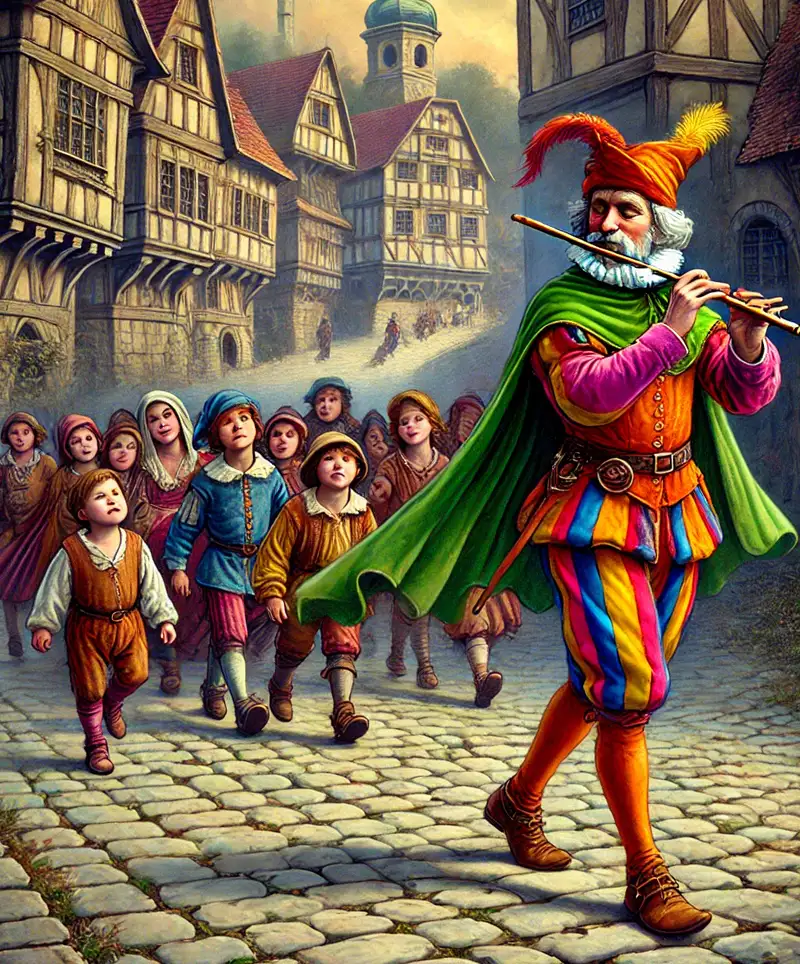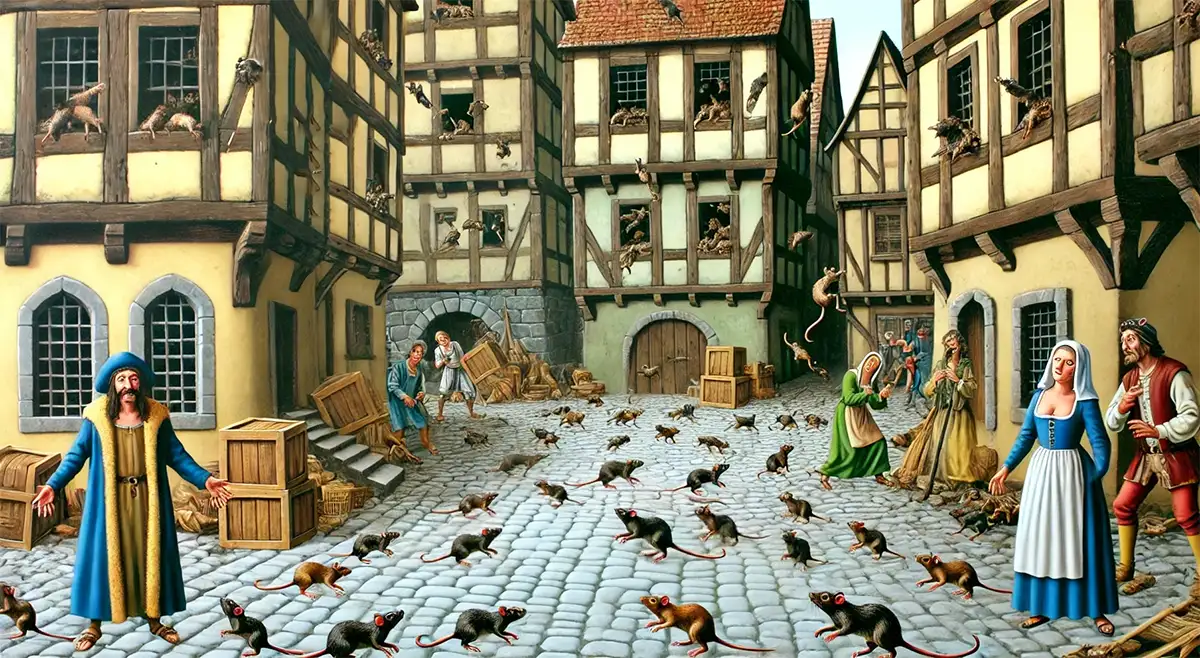The tale of the Pied Piper of Hamelin is more than just an entertaining story of musical prowess and cunning revenge; it serves as a timeless lesson in morality and ethics. At its core, the story underscores the importance of honesty, integrity, and the fulfillment of promises.
 The first and most obvious moral is the dire consequence of breaking promises. The townspeople of Hamelin, in their eagerness to save money, reneged on their agreement with the Pied Piper. Their decision to cheat him out of his rightful reward was not only unethical but also short-sighted. The devastating repercussions—losing their children—served as a harsh reminder that trust and agreements should never be taken lightly. In our own lives, this principle holds true; honoring our commitments, whether personal or professional, is fundamental to maintaining trust and fostering healthy relationships.
The first and most obvious moral is the dire consequence of breaking promises. The townspeople of Hamelin, in their eagerness to save money, reneged on their agreement with the Pied Piper. Their decision to cheat him out of his rightful reward was not only unethical but also short-sighted. The devastating repercussions—losing their children—served as a harsh reminder that trust and agreements should never be taken lightly. In our own lives, this principle holds true; honoring our commitments, whether personal or professional, is fundamental to maintaining trust and fostering healthy relationships.
Another important lesson is the danger of greed. The town leaders' decision to withhold the agreed-upon payment from the Piper was driven by a desire to save money, but their greed ultimately cost them far more than they intended to save. This reflects a broader truth about human behavior: greed often leads to greater losses, both material and moral. By choosing short-term gain over long-term integrity, the people of Hamelin paid a steep price, emphasizing that ethical behavior often leads to better outcomes in the long run.
The story also highlights the power of individuals to effect change, for better or worse. The Pied Piper, though a single person, wielded incredible influence through his unique talent. His ability to charm the rats—and later, the children—demonstrates how one person’s actions can have a profound impact on an entire community. This serves as a reminder of our potential to create significant positive or negative changes in the world around us. Whether we use our talents for good or ill is a choice that defines our character and legacy.
Furthermore, the tale serves as a cautionary story about the consequences of underestimating others. The townspeople initially saw the Piper as merely a means to an end, not recognizing his true power and the seriousness of their agreement with him. Underestimating his abilities and failing to respect their deal led to their downfall. This teaches us to acknowledge and respect the abilities and contributions of others, no matter how unconventional they may seem.
Lastly, the story of the Pied Piper can be seen as a reflection on the unexpected consequences of our actions. The townspeople never imagined that their refusal to pay the Piper would lead to the loss of their children. This aspect of the story reminds us to consider the broader implications of our decisions and actions. Often, what seems like a small or harmless decision can lead to significant, unforeseen consequences.
On National Rat Catcher’s Day, as we reflect on the tale of the Pied Piper of Hamelin, we are reminded to uphold our promises, act with integrity, and respect the power and potential within each individual. It’s a day to celebrate not just the art of pest control but also the rich moral lessons that folklore and legends impart, guiding us to be better, more ethical members of our communities.








 The first and most obvious moral is the dire consequence of breaking promises. The townspeople of Hamelin, in their eagerness to save money, reneged on their agreement with the Pied Piper. Their decision to cheat him out of his rightful reward was not only unethical but also short-sighted. The devastating repercussions—losing their children—served as a harsh reminder that trust and agreements should never be taken lightly. In our own lives, this principle holds true; honoring our commitments, whether personal or professional, is fundamental to maintaining trust and fostering healthy relationships.
The first and most obvious moral is the dire consequence of breaking promises. The townspeople of Hamelin, in their eagerness to save money, reneged on their agreement with the Pied Piper. Their decision to cheat him out of his rightful reward was not only unethical but also short-sighted. The devastating repercussions—losing their children—served as a harsh reminder that trust and agreements should never be taken lightly. In our own lives, this principle holds true; honoring our commitments, whether personal or professional, is fundamental to maintaining trust and fostering healthy relationships.








 "Sláinte!" is a traditional Irish expression used as a toast, equivalent to "Cheers!" in English.
"Sláinte!" is a traditional Irish expression used as a toast, equivalent to "Cheers!" in English.